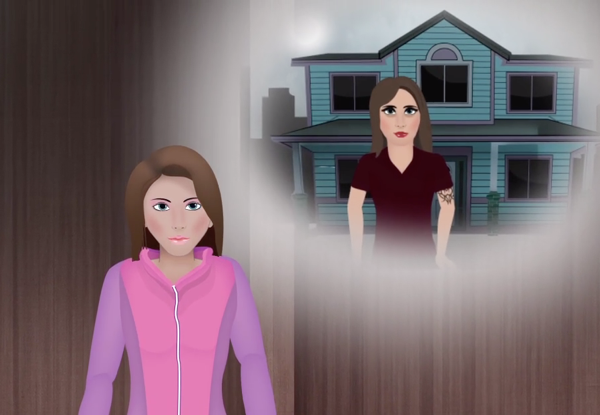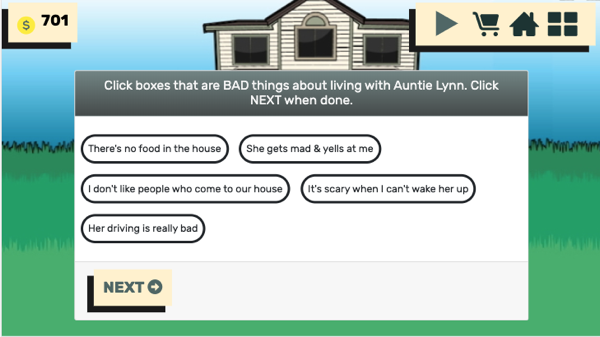Motivational Interviewing in Crossroads
When we sat down to create a game-based application to teach decision-making in high-risk situations, we didn’t just make the first thing that came to mind. We worked with counselors in substance abuse treatment and prevention programs, vocational rehabilitation and schools to discuss what theories and techniques made the most sense.

Motivational interviewing is based on the assumption that people who engage in substance abuse and other risk behaviors have motives that both promote and discourage behaviors. In short, there are reasons that people do things and sometimes they’re in conflict. It’s not that people don’t know that living with someone addicted to pain pills is a bad situation. Sometimes, though, there is the conflict between,
“Yeah, people who creep me out come to the house”
and
“She pays the bills and I don’t know where I’d get a job and get money if I moved out.”
Resolving these conflicting motives is key to behavioral change.
Why are all of these choices bad?
In one part of Crossroads: New Decisions where the player has to choose, in one screen, the bad parts of living with her aunt and, in another, the good parts. The first screen is shown below. When you click on these choices, more appear. All are negative.

Recently, I was asked why all of these options were negative. Shouldn’t we have some positive ones so we can mark “right” or “wrong” in our data the choices the players selected.
👎🏽 Nope.
The purpose of this task is to help players identify what are the negative aspects about their particular situations. There is a second set of screens where players are asked to identify the good things about the situation with Jessie and Auntie Lynn. There is also a third set where the player identifies what he or she can and cannot change about the situation
Interactive Journals and Motivational Interviewing
Some counselors have used interactive journals where the client writes their responses to prompts like these and then the counselor provides written feedback. In theory, this is a great idea for extending counseling time, especially in rural areas where transportation, travel time to the clinic and a shortage of counselors all make it difficult to find have adequate in-person counseling. For a variety of reasons we’ll discuss later, students or clients often simply don’t do the interactive journal writing.
(If you’re interested in learning more about motivational interviewing, a good place to start is Motivational interviewing: Helping people change by Miller & Rollnick).